High Water 2018-2019
-
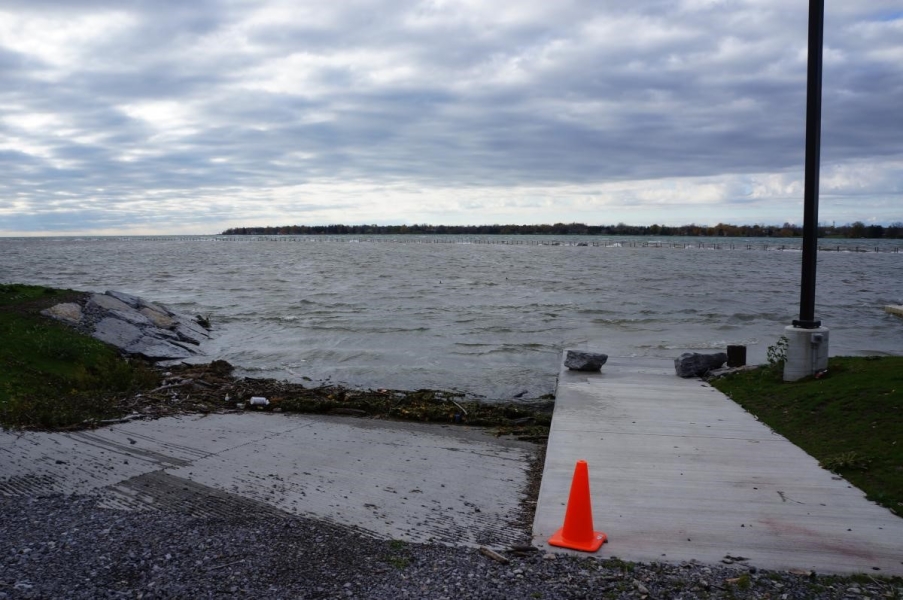
1/7
For several years, the Field Station had trouble with low water making it hard to launch. Then we had our launch redone to fix that issue, but in 2018-2019 the Great Lakes reached record high water levels. Seiches raise the water levels even higher.
Download Image -
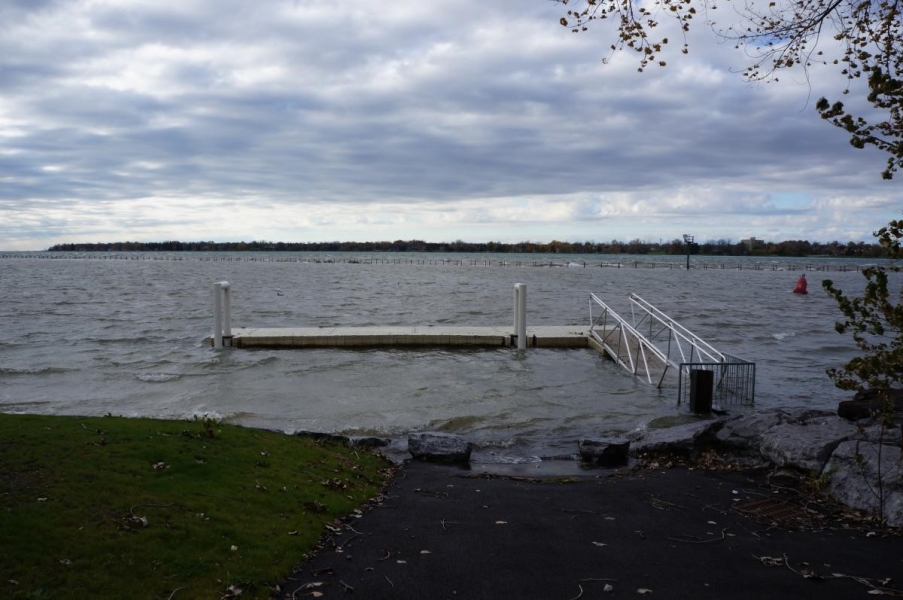
2/7
The floating dock works, but high water during this storm and seiche event meant that you can't get to it. The concrete dock was completely submerged and the access ramp that was usually sloped downward was lifted up.
Download Image -
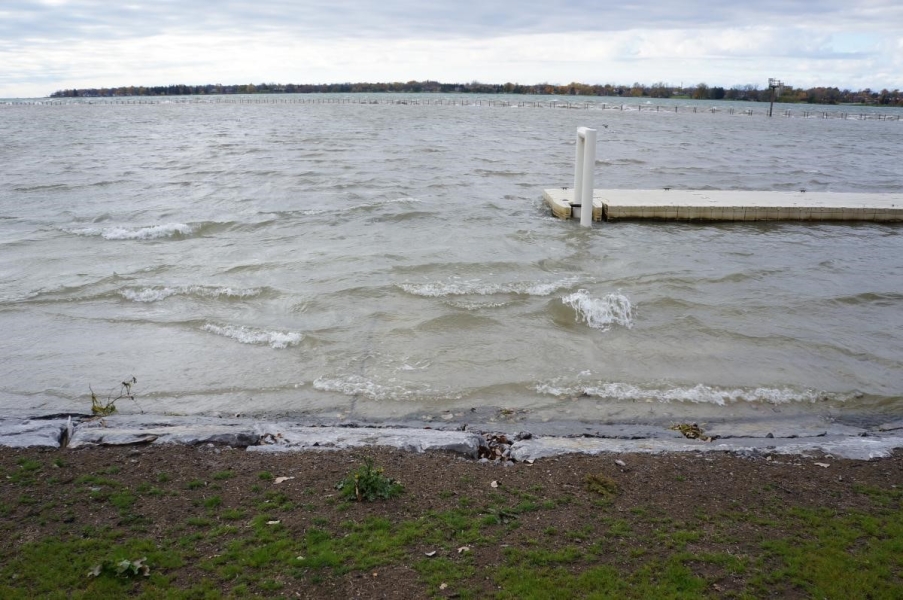
3/7
If the water was much higher, there might be problems with erosion. (Edit: There were several problems with erosions in the coming years.)
Download Image -
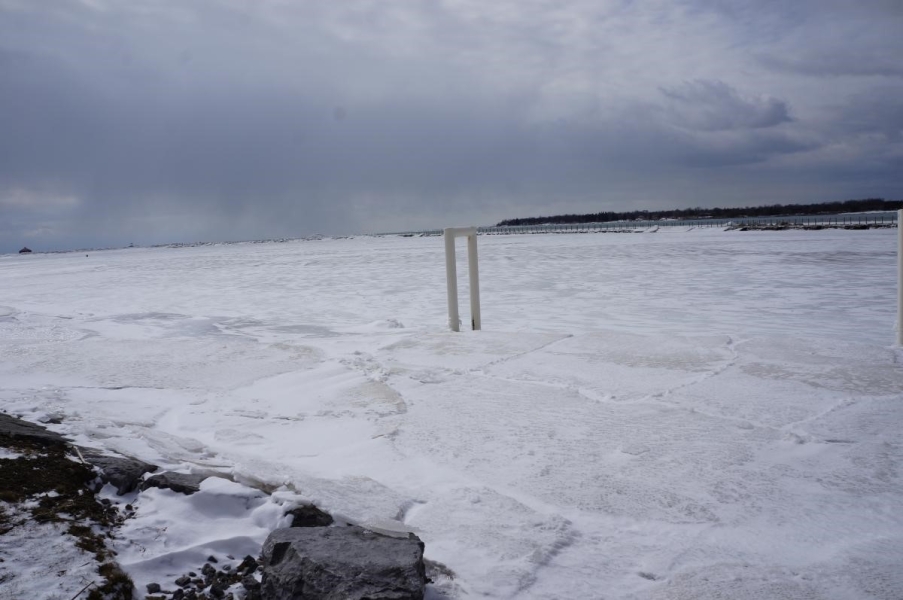
4/7
In winter, high water levels meant that ice was pushed up onto the dock. This happens from time to time, but is more frequent with higher water levels. During a windstorm in February 2019, part of the ice boom broke, allowing tons of ice to spill from Lake Erie into the Niagara River.
Download Image -

5/7
During a windstorm in February 2019, part of the ice boom broke, allowing tons of ice to spill from Lake Erie into the Niagara River.
Download Image -
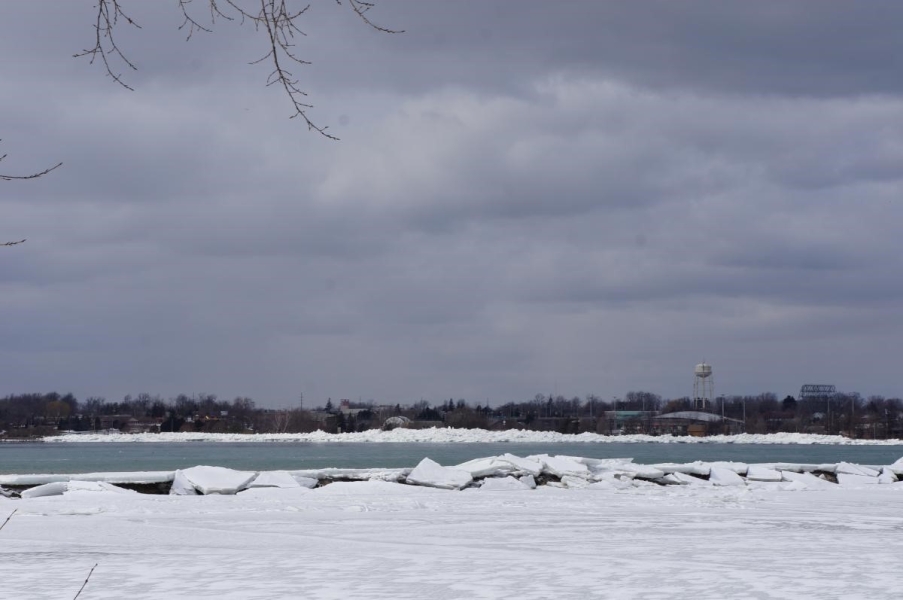
6/7
During a windstorm in February 2019, part of the ice boom broke, allowing tons of ice to spill from Lake Erie into the Niagara River. It crashed down over the breakwall and piled up on the Canadian shore.
Download Image -
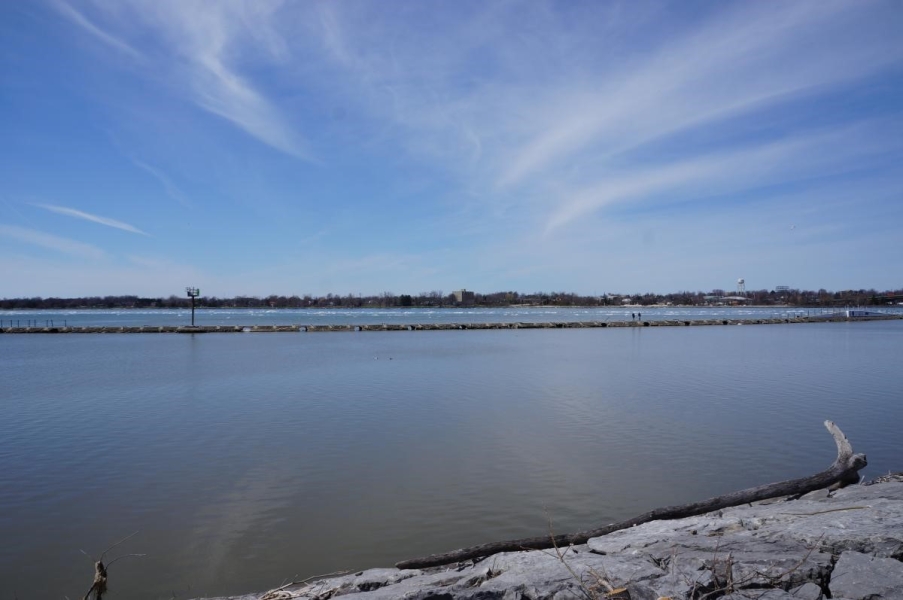
7/7
When the ice began to melt, the damage to the breakwall was apparent. The railings had been broken off in several places, including a large section across from the Field Station. Despite being officially closed, people continued to utilize the breakwall.
Download Image

